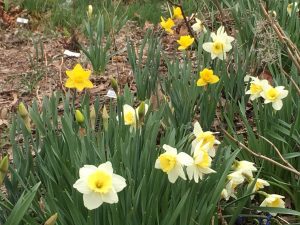
Narcisssus in front bed
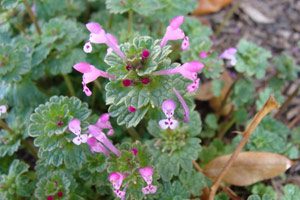
Henbit

Hairy Bittercress
Spring is trying to put in an appearance. Yesterday, as I walked through the garden, I saw that the narcissus and hyacinths are budded and I even saw a few Anemone blanda in bloom. I also noticed leaf buds on my roses and clematis and did a bit of pruning but what I really noticed were the weeds, particularly, henbit and hairy bittercress. This means that more weeds will be sprouting before you can blink your eyes if they haven’t already poked through the soil. Once the weeds sprout, they will compete with your plants and, in your vegetable garden, with the seedlings for space, moisture and nutrients.
Ironically, the old way of preparing a garden encourages weeds. Weed seeds lie dormant in garden soil by the millions. Turning and tilling the soil exposes these weed seeds to the light they need to germinate and grow.
Ridding a garden of vigorous weeds can be a backbreaking, time-consuming task. It is very satisfying to pull weeds but keep in mind that doing so exposes that patch of ground to light. Have a bucket of leaf humus or shredded bark and a kneeling or sitting pad with you. Wherever you pull a weed, cover the spot immediately with the humus or bark to prevent weed seed emergence. Weeds pull out easily when the soil is moist so just after a rain is the perfect time to weed. If the soil is dry, cut the root system of the weed just below the soil level with a knife or a sharp hoe instead of pulling it.
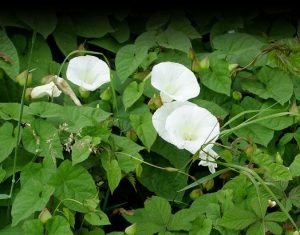
Bindweed-henrystreetgardencentre.com
Do not try to pull bindweed (that thing that looks like white morning glory). It has a deep and wide-spread taproot. The only hope is weakening it by cutting off the leaves as soon as they emerge.
If the weeds get ahead of you, the next best preventive measure is removing the flower so that it can’t go to seed. That should weaken the weed by forcing it to use up food reserves.
Many gardeners try, literally, to nip things in the bud in early spring by applying a pre-emergent to stop new weeds from foliating. However, pre-emergents don’t kill weeds. They’re weed preventers; therefore, existing weeds must be removed manually before sprinkling the pre-emergent granules on the ground, creating a chemical barrier that seedlings cannot penetrate.
Gardeners planting vegetable seeds should only apply a pre-emergent once the young vegetable plants have attained a height of close to three inches and exhibit true leaves, the ones above the first set of leaves.
Preen is the best known of the pre-emergents and the barrier usually lasts three to four months. Many gardeners, however, prefer to use an organic pre-emergent like corn gluten. If you choose the corn gluten, be aware that it will only be effective for six weeks. and needs to be reapplied.
It’s important to remember that corn gluten is naturally high in nitrogen so you may need to adjust other fertilizer applications accordingly.
Other organic weed prevention options include adding a two-inch layer of mulch or putting down a layer of moistened newspapers and/or cardboard and then a layer of soil or mulch. The object is preventing light from reaching the soil around your plants. Meanwhile the decaying paper will help improve your soil.
Try not to leave empty spaces in your garden beds. They merely encourage weeds to fill that space.
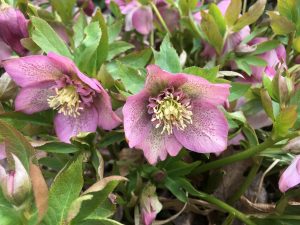
Helleborus ‘Hot Flash’
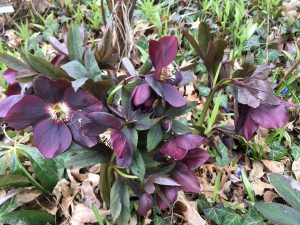
Helleborus ‘Red Racer’
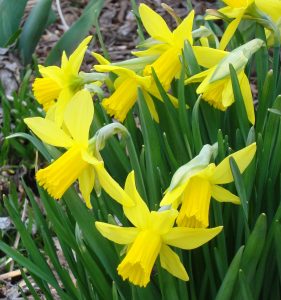
Narcissus ‘Mary Gay Lirette’ in my back garden
On a happier note, enjoy these photos of spring.


1 Comment